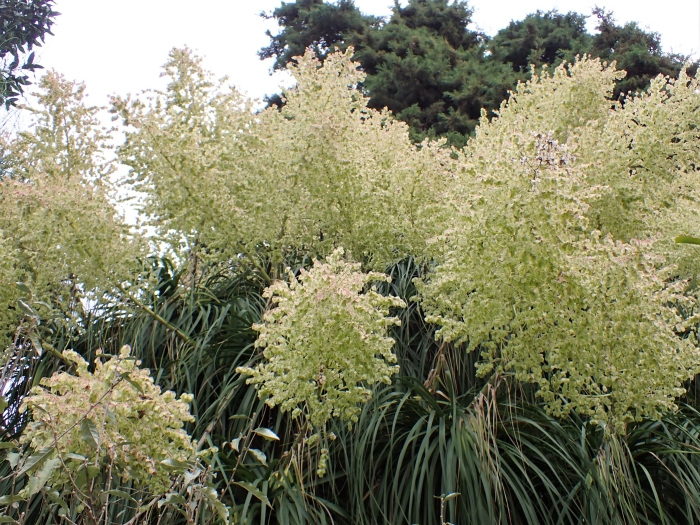Ponytail Palm
(Beaucarnea recurvata)
Ponytail Palm (Beaucarnea recurvata)
/
/

Krzysztof Ziarnek, Kenraiz
CC BY-SA 4.0
Image By:
Krzysztof Ziarnek, Kenraiz
Recorded By:
Copyright:
CC BY-SA 4.0
Copyright Notice:
Photo by: Krzysztof Ziarnek, Kenraiz | License Type: CC BY-SA 4.0 | License URL: https://creativecommons.org/licenses/by-sa/4.0 | Uploader: Kenraiz | Publisher: Wikimedia Commons | Title: Beaucarnea_recurvata_kz01.jpg | Notes: {{Information |Description ={{en|1=Location taken: Fairchild Tropical Botanic Garden, Miami, FL USA. Names: Beaucarnea recurvata Lem., Beukarnea wygięta, Bottle Palm, Bottle-Palm, Elefantenfuß, Elefantenfuß (Pflanze), Elephant's foot, Elep... |

































Estimated Native Range
Summary
Beaucarnea recurvata, commonly known as Ponytail Palm, is an evergreen succulent native to the semi-desert regions of eastern Mexico. Despite its common name, it is not a true palm but a member of the Asparagaceae family. This species can grow up to 15 feet 6 inches (4.72 m) tall and is characterized by its swollen, water-storing caudex and a canopy of long, cascading, strap-shaped leaves that give it a distinctive, ponytail-like appearance. Mature plants may produce panicles of small, white flowers after a decade, although flowering is rare in cultivation. The Ponytail Palm is valued for its unique form and is often used as a focal point in xeriscaping, rock gardens, and as a potted specimen in temperate climates.
The Ponytail Palm thrives in arid conditions, making it an excellent choice for drought-tolerant landscaping. It is well-suited to full sun to light shade and prefers a well-draining soil mix. Hardy to −5 °C (23 °F), it should be protected from frost and brought indoors in colder climates. Over-watering should be avoided to prevent pest infestations such as mealybugs and cochineal insects. When repotting, it is crucial to preserve the root system to maintain the plant’s health. Its slow growth rate and minimal maintenance requirements make it a popular choice for indoor and outdoor cultivation.CC BY-SA 4.0
The Ponytail Palm thrives in arid conditions, making it an excellent choice for drought-tolerant landscaping. It is well-suited to full sun to light shade and prefers a well-draining soil mix. Hardy to −5 °C (23 °F), it should be protected from frost and brought indoors in colder climates. Over-watering should be avoided to prevent pest infestations such as mealybugs and cochineal insects. When repotting, it is crucial to preserve the root system to maintain the plant’s health. Its slow growth rate and minimal maintenance requirements make it a popular choice for indoor and outdoor cultivation.CC BY-SA 4.0
Plant Description
- Plant Type: Tree, Succulent
- Height: 6-15 feet
- Width: 3-5 feet
- Growth Rate: Slow
- Flower Color: N/A
- Flowering Season: Spring, Summer
- Leaf Retention: Evergreen
Growth Requirements
- Sun: Full Sun, Part Shade
- Water: Low
- Drainage: Medium, Fast
Common Uses
Drought Tolerant, Fire Resistant, Low Maintenance, Potted Plant, Street Planting
Natural Habitat
Semi-desert regions of eastern Mexico
Other Names
Common Names: Elephant’s Foot, Flasklilja, Bottle Palm, Beaucarnea
Scientific Names: , Beaucarnea recurvata, Nolina recurvata, Beaucarnea inermis, Dasylirion inerme, Dasylirion inermis, Dasylirion recurvatum, Pincenectitia tuberculata, Beaucarnea tuberculata, Nolina tuberculata
GBIF Accepted Name: Beaucarnea recurvata Lem.